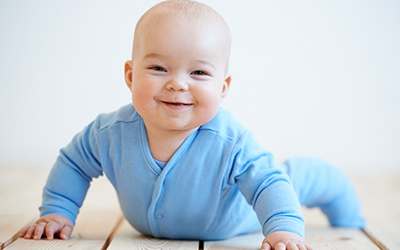Posted on Nov 13, 2023
File ID 46641870 | © Daniel Dash | Dreamstime.com

Teething can be an uncomfortable experience for both babies and parents.
This is why the tale of a mythical creature who visits in the night to exchange a lost baby tooth under the pillow for a small gift, often money, is told worldwide.
The process of baby teeth being pushed out by permanent teeth is a marvel of nature. When the permanent tooth beneath a baby tooth is ready to emerge, it starts to dissolve the roots of the primary tooth. This gradual process allows the baby's tooth to become loose, making it easier for a child to lose it naturally. It's a fascinating example of how the human body orchestrates its changes.
Typically, a baby’s teeth – the central incisors – come out first after six months. In rare cases, they come out when a baby is 10 months old. It’s also possible that you might experience a bite at 2 months.
Sometimes, a child might lose a baby tooth only to find that their new permanent tooth is a different shade. This temporary mismatch happens because baby teeth tend to be whiter than permanent teeth.
Babies can develop Baby Bottle Tooth Decay, which usually happens when infants and toddlers are exposed to sugary liquids.
Baby teeth falling out has a pattern. The first two incisors are the first to come and go out.
Teething can be an uncomfortable experience for both babies and parents. Common teething symptoms include drooling, irritability, and swollen gums. Contrary to popular belief, fever and diarrhea are not typical teething symptoms. If your child experiences these, it's essential to consult a pediatrician and dentist in Frederick.
Unlike adults, babies only sprout 20 teeth in the first three years. The replacement process continues until they are around 14 years old.
There are dozens of remedies to ease teething pain. You can make
Thumb-sucking and
Oral hygiene should start before the first incisor erupts. Parents should use a damp, soft cloth to clean the baby’s gums. This will help prevent bacteria buildup. Once the first tooth emerges, it’s essential to begin gentle brushing with an infant toothbrush and water.
Firestone Pediatric Dentistry & Orthodontics understands that nothing is more important than ensuring the best care for your little one. That’s why our Fredrick dentistry provides expert dental care tailored to the unique needs of your child. Our dedicated team of professionals makes dental visits a positive and enjoyable experience for kids. For more information, call our Frederic pediatric dentistry office at 303-848-3633.